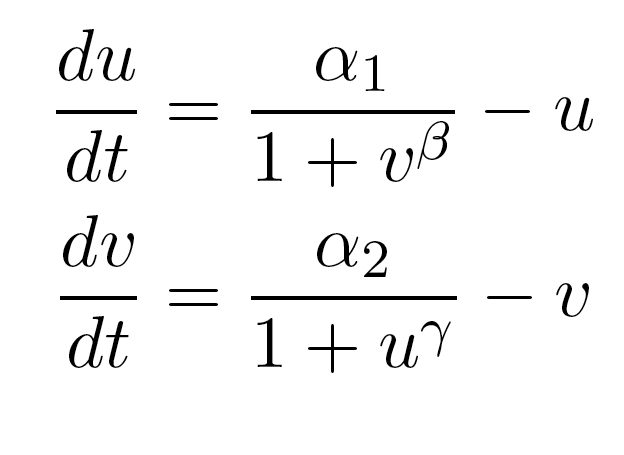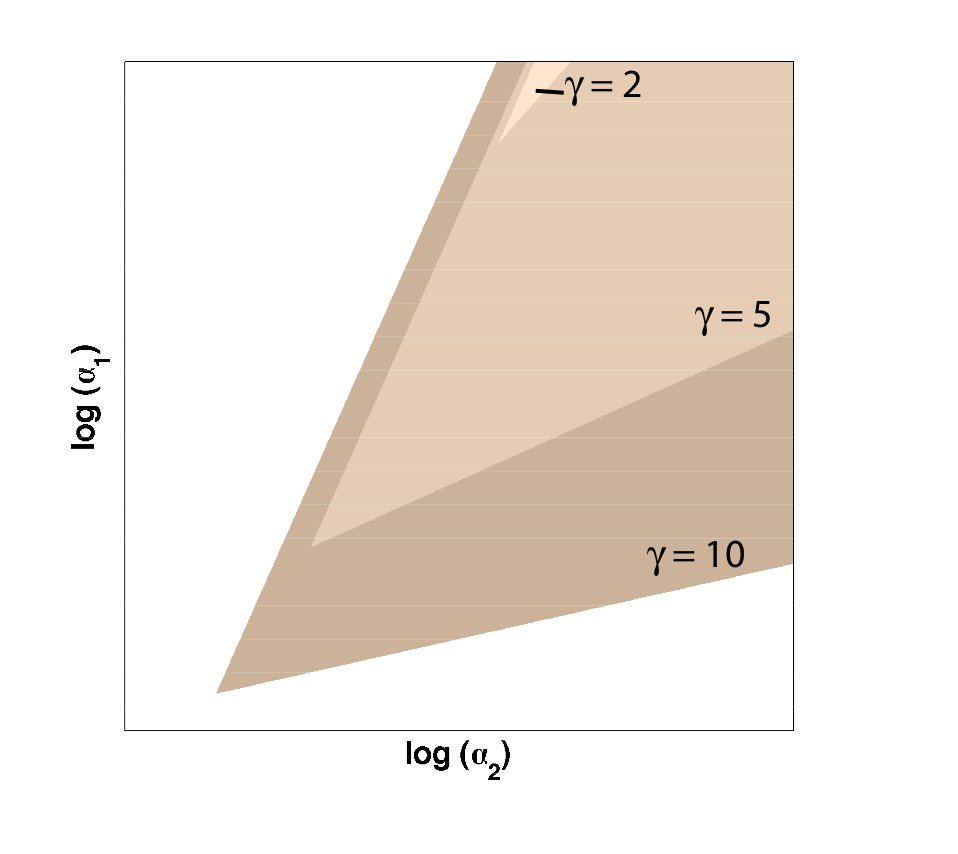Team:UCSF/Modeling
From 2008.igem.org
| Line 7: | Line 7: | ||
Since only one "leg" of our toggle switch would be regulated by heterochromatin and be highly cooperative, we first wanted to check how the system would behave with only one high cooperativity constant (and the other constant set to 1). For this, we simply implemented the Gardner model in Matlab and plotted the resulting bistable regions: | Since only one "leg" of our toggle switch would be regulated by heterochromatin and be highly cooperative, we first wanted to check how the system would behave with only one high cooperativity constant (and the other constant set to 1). For this, we simply implemented the Gardner model in Matlab and plotted the resulting bistable regions: | ||
| - | [[Image:UCSFmodel_equations.png|center|150px]] | + | {| border=1 align=center |
| - | + | |[[Image:UCSFmodel_equations.png|center|150px]] | |
| - | [[Image:UCSFmodel_region.png|center|500px]] | + | |width=550 align=center|[[Image:UCSFmodel_region.png|center|500px]] |
| + | |- | ||
| + | | | ||
| + | |width=550 align=center|Figure 1: The region of bistability expands as one of the cooperativity constants (gamma, in this case) is increased. This shows that even if only one leg of our toggle switch has high cooperativity (and ideally, very high cooperativity), then there is a large region of parameter space where we can get bistable or toggling behavior. | ||
| + | |} | ||
Revision as of 01:21, 24 October 2008
As we mentioned before, memory is a necessary aspect of gene regulation when the cell state established after a transient stimuli needs to be remembered for longer times. One way to establish memory is using two repressor proteins that control the synthesis of each other, i.e. a "toggle" switch. So for the modeling portion of our iGEM project, we decided to focus on coming up with an intuitive model for a heterochromatin-based toggle switch that will allow us to show some of the advantages of using heterochromatin in building synthetic circuits.
Starting Simple: the Gardner-Collins Toggle Switch
Previous work by the Collins group (Gardner, et al. Nature 2000) has shown that in a transcription-based circuit, at least one of the repressors needs to cooperatively repress transcription to achieve the bistability necessary for the formation of a toggle switch. In addition, the cooperativity needs to be much greater than one for a robust system, i.e. one that will generate a wide bistable region in the parameter space that is composed of different values for the two promoter strengths. Heterochromatin formation, by nature, is a highly cooperative phenomenon, a property which we can exploit as a tool for building a toggle switch.
Since only one "leg" of our toggle switch would be regulated by heterochromatin and be highly cooperative, we first wanted to check how the system would behave with only one high cooperativity constant (and the other constant set to 1). For this, we simply implemented the Gardner model in Matlab and plotted the resulting bistable regions:
| Figure 1: The region of bistability expands as one of the cooperativity constants (gamma, in this case) is increased. This shows that even if only one leg of our toggle switch has high cooperativity (and ideally, very high cooperativity), then there is a large region of parameter space where we can get bistable or toggling behavior. |
Heterochromatin as a Polymer?
| Home | The Team | The Project | Parts Submitted to the Registry | Modeling | Human Practices | Notebooks |
|---|
 "
"

